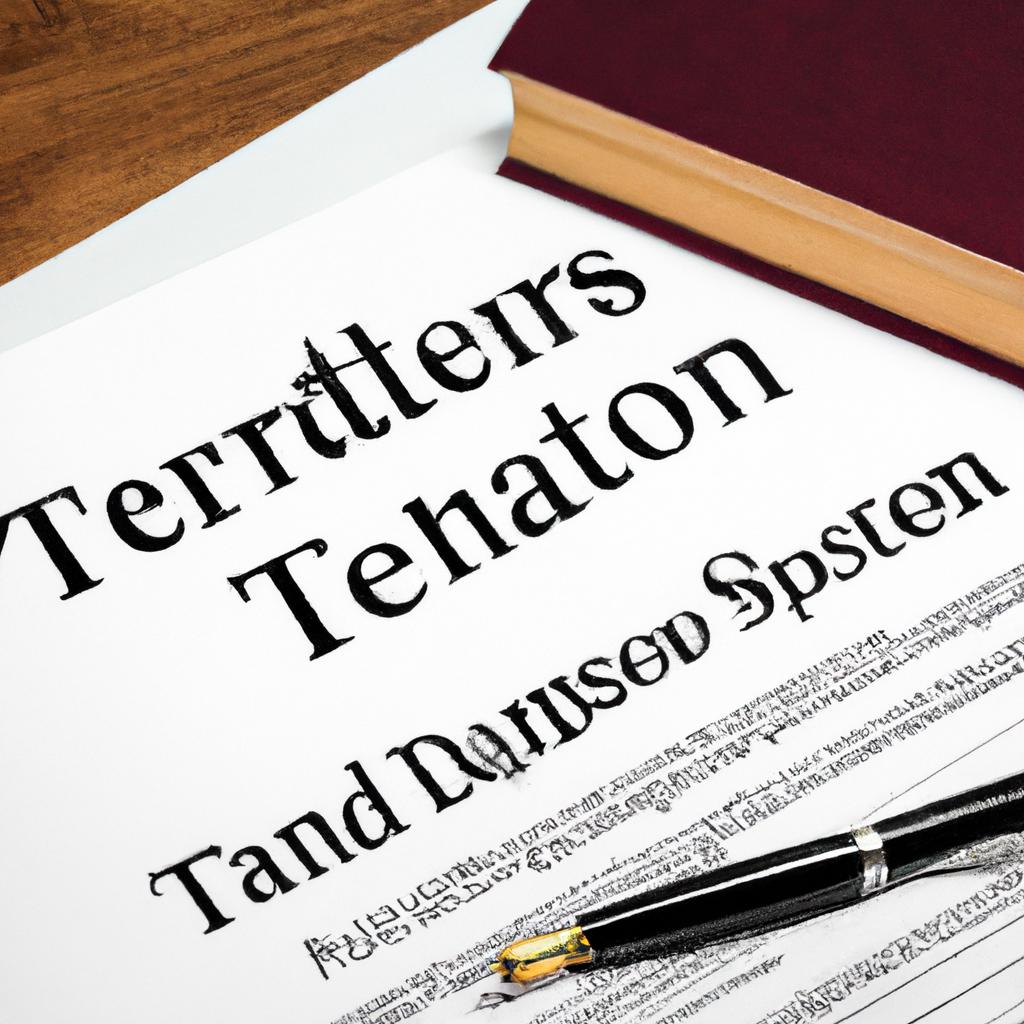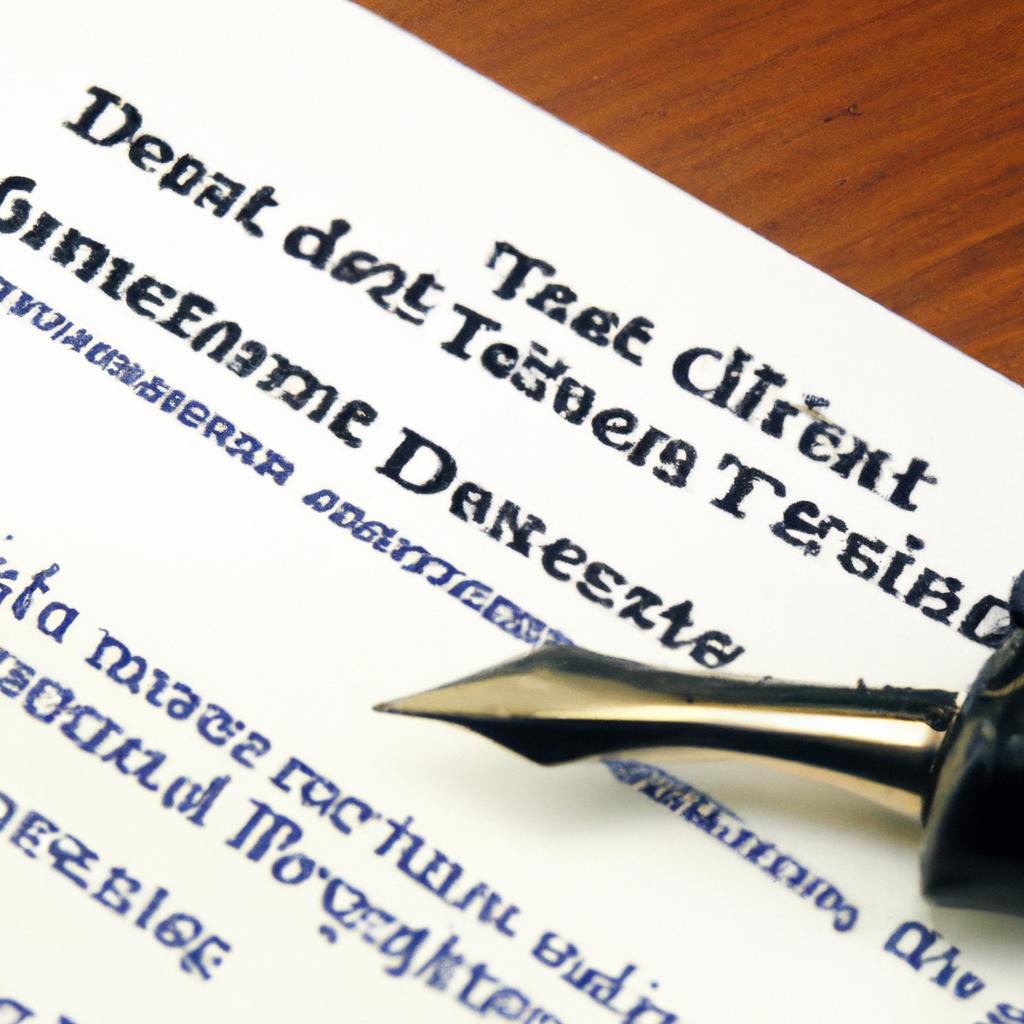In the intricate tapestry of real estate transactions, the concept of transferring property through a deed holds profound significance. As experienced legal practitioners at Morgan Legal Group in New York City, we navigate the complex terrain of estate planning, probate, elder law, Wills, and trusts with precision and expertise. Today, we delve into the nuanced realm of transfer on deed, shedding light on this crucial aspect of property ownership and conveyance. Join us as we unravel the intricate web of legal intricacies surrounding this fundamental mechanism of property transfer.
Understanding Transfer on Death Deeds
Transfer on Death Deeds, also known as TOD deeds, are a convenient estate planning tool that allows property owners to transfer ownership of their real estate to designated beneficiaries upon their death. By using a Transfer on Death Deed, individuals can avoid the probate process and ensure that their property passes seamlessly to their chosen beneficiaries without the need for a will.
One of the key benefits of a Transfer on Death Deed is that it allows property owners to retain full control of their property during their lifetime. This means that they can sell, mortgage, or transfer the property at any time without the need for consent from the designated beneficiaries. Additionally, Transfer on Death Deeds are revocable, meaning that the property owner can change their designated beneficiaries at any time, providing flexibility and peace of mind.

Key Considerations for Utilizing Transfer on Death Deeds Properly
When utilizing Transfer on Death Deeds (TOD) in estate planning, it is crucial to carefully consider the following key factors:
- Property Ownership: Make sure the property is eligible for a TOD deed and that all owners consent to the transfer.
- Beneficiary Designation: Clearly identify the beneficiary and provide their full legal name, address, and contact information.
- Contingent Beneficiary: Consider naming a contingent beneficiary in case the primary beneficiary predeceases the property owner.
Additionally, it is important to review the deed language carefully to ensure it complies with state laws and accurately reflects the property owner’s intentions. Consulting with an experienced estate planning attorney, such as Morgan Legal Group in New York City, can help navigate the complexities of TOD deeds and ensure proper execution to avoid potential challenges in the future.

Maximizing the Benefits of Transfer on Death Deeds
When it comes to estate planning, utilizing transfer on death deeds can be a powerful tool in ensuring your assets are passed on smoothly to your designated beneficiaries. By understanding how to maximize the benefits of transfer on death deeds, you can streamline the transfer process, avoid probate, and protect your assets for future generations. Here are some key strategies to make the most out of this valuable estate planning tool:
- Keep your deed updated: It is crucial to regularly review and update your transfer on death deed to ensure it reflects your current wishes and beneficiaries.
- Consider multiple beneficiaries: By designating multiple beneficiaries on your transfer on death deed, you can divide your assets among loved ones more efficiently and prevent potential conflicts.
- Consult with an estate planning attorney: Seeking guidance from a professional can help you navigate the complexities of transfer on death deeds and ensure your estate plan aligns with your overall goals.

Navigating the Legal Implications of Transfer on Death Deeds
When it comes to , it is crucial to understand the intricacies of this estate planning tool. A transfer on death deed, also known as a beneficiary deed, allows an individual to transfer real property to a designated beneficiary upon their death without the need for probate. This can be a convenient way to ensure that your assets pass to your chosen heirs seamlessly.
However, it is essential to consult with a knowledgeable attorney to ensure that the transfer on death deed is properly executed and complies with all legal requirements. Our team at Morgan Legal Group in New York City has extensive experience in estate planning and can help you navigate the complexities of transfer on death deeds. We can advise you on the implications of this estate planning tool and help you make informed decisions to protect your assets and provide for your loved ones.
Q&A
Q: What is a transfer on deed?
A: Transfer on deed refers to the process of transferring ownership of a property from one individual to another through a legal document known as a deed.
Q: How is a transfer on deed different from other forms of property transfer?
A: Unlike other forms of property transfer, such as a sale or a gift, transfer on deed involves the signing of a deed that legally conveys ownership of the property.
Q: What are the advantages of using transfer on deed?
A: Transfer on deed can be a relatively simple and straightforward way to transfer ownership of a property without the need for a more complex legal process. It can also provide a clear record of the transfer for both parties involved.
Q: Are there any drawbacks to using transfer on deed?
A: One potential drawback of using transfer on deed is that it may not provide the same level of legal protection as a traditional sale or transfer conducted with the assistance of a lawyer. It is important to carefully consider the implications before choosing this method of property transfer.
Q: How can someone initiate a transfer on deed?
A: To initiate a transfer on deed, the current owner of the property will need to draft a deed that specifies the new owner and the terms of the transfer. Both parties will then need to sign the deed in the presence of a notary public to make the transfer legally binding.
Q: Can transfer on deed be used for all types of properties?
A: Transfer on deed can typically be used for most types of real estate properties, including residential homes, commercial buildings, and vacant land. However, it is important to check with local regulations to ensure that the transfer complies with all legal requirements.
Wrapping Up
In conclusion, transfer on deed can be a valuable tool for simplifying the process of transferring ownership of property. By utilizing this method, both parties can avoid potential complications and delays that may arise with traditional transfer methods. Whether you are buying, selling, or gifting property, transfer on deed offers a streamlined and efficient solution. Consider exploring this option for your next real estate transaction and experience the convenience it can bring to the transfer process. Thank you for reading.
 Transfer on Deed: Understanding the Process, Benefits, and Practical Tips
Transfer on Deed: Understanding the Process, Benefits, and Practical Tips
When it comes to buying or selling a property, there are various legal documents and procedures that need to be completed. One such important document is the deed, which serves as proof of ownership of the property. However, there may be situations where the property ownership needs to be transferred from one party to another, which is where transfer on deed comes into play. In this article, we will explore everything you need to know about transfer on deed, including its process, benefits, and practical tips.
What is Transfer on Deed?
A transfer on deed, also known as a deed transfer, is the process of legally transferring the ownership of a property from one individual or entity to another. This process involves transferring the title of the property from the grantor (current owner) to the grantee (new owner). This can happen through various means, such as inheritance, gift, sale, or donation.
The transfer on deed process typically involves drafting a new deed that outlines the details of the transfer, including the names of the parties involved, a legal description of the property, and the transferor’s signature in the presence of a notary public. This new deed is then recorded with the appropriate government agency, usually the county recorder’s office, to make it a public record.
Benefits of Transfer on Deed
1. Quick and Efficient Process
One of the major benefits of transfer on deed is that it is a relatively quick and efficient process. Compared to other methods of transferring property ownership, such as through a will or trust, transfer on deed can be completed in a matter of days. This is because it does not require court involvement, which can be time-consuming and costly.
2. Avoidance of Probate
Probate is the court-supervised process of distributing a deceased person’s assets to their beneficiaries. This process can be lengthy and expensive, causing delays in the transfer of property ownership. However, with transfer on deed, the property ownership is transferred directly to the designated beneficiary, bypassing the probate process altogether.
3. Flexibility and Control
Transfer on deed offers flexibility and control to both the grantor and grantee. The grantor can designate when the transfer of property ownership will take place, allowing them to maintain control over their assets until they are ready to transfer ownership. The grantee can also choose to decline the transfer if they are not ready or willing to take on the responsibility of ownership at the designated time.
4. Cost-Effective
As mentioned earlier, transfer on deed does not require court involvement, making it a cost-effective option for property transfer. Compared to other methods, such as setting up a trust, transfer on deed eliminates the need for attorney fees and court costs, resulting in substantial cost savings.
5. Privacy Protection
Another benefit of transfer on deed is the protection of privacy. With a will or trust, the information of the deceased person’s assets and beneficiaries becomes public record during the probate process. However, with transfer on deed, the details of the transfer remain private, providing a level of confidentiality.
Practical Tips for Transfer on Deed
1. Consult with a Real Estate Attorney
While transfer on deed may seem like a straightforward process, it is essential to consult with a real estate attorney to ensure all legal requirements are met. They can help draft the new deed and ensure all necessary documents are properly completed and recorded.
2. Consider Potential Tax Implications
Before proceeding with transfer on deed, it is crucial to consider any potential tax implications. The transfer may result in gift taxes or capital gains taxes, so it is best to consult with a tax professional to understand any potential tax consequences.
3. Choose the Right Type of Deed
There are different types of deeds, such as warranty deeds or quitclaim deeds, that can be used for the transfer of property ownership. It is important to understand the differences between these types of deeds and choose the one that best suits your needs and protects your interests.
4. Keep Accurate Records
Once the transfer on deed is complete, it is important to keep accurate records of all documentation and details regarding the transfer. This includes a copy of the new deed, recording information, and any other relevant documents.
In Conclusion
Transfer on deed is a popular and efficient way of transferring property ownership. It offers many benefits, such as a quick and cost-effective process, avoidance of probate, and flexibility for both parties involved. However, it is important to understand all aspects of the process and seek professional assistance when necessary. With the right knowledge and guidance, transfer on deed can be a smooth and stress-free process that benefits both the grantor and grantee.

